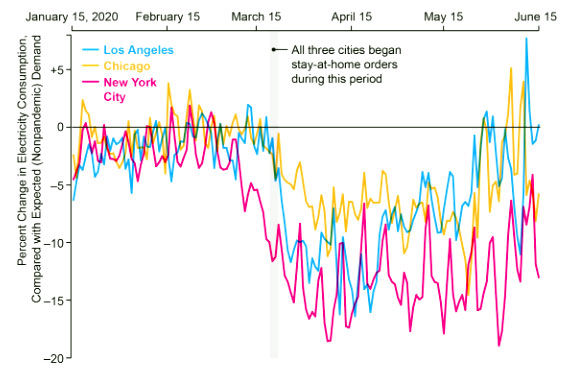I’m not exaggerating when I say changing your approach to office space can help save the planet. At Upflex, we build real estate solutions that help our users reduce greenhouse gas emissions, save energy, and even plant trees — in cost-efficient ways. Here are three small workspace-related changes our clients are making that come with a global impact.
Building environmental responsibility into your company mission isn’t just good for Earth and for your conscience. As a company founder, I know: It’s good for your bottom line. Much of the talent you are competing for are more likely to take a job offer from a company that puts sustainability first. In fact, a notable share of the workforce says they would actually take a pay cut for a role at an environmentally responsible company. So, it’s no wonder that some of the world’s biggest corporations and most recognizable brand names — from Unilever to Panasonic, Microsoft to Nike — are finding ways to get greener, from reducing waste to redesigning their businesses for net-zero emissions.
These are major changes; not every company has the resources to rethink their manufacturing or fulfillment from the ground up to use less plastic or produce less waste. But there is one major aspect of a company’s carbon footprint that is already very much in flux: real estate.
Our real estate portfolios are a relatively easy aspect of our businesses to optimize when it comes to environmental responsibility, and it doesn’t even require retrofitting buildings with low-energy HVACs or Low-E window glass. In fact, you may already be doing one of the most helpful things you can: Allowing remote work. Here are three ways that a remote or hybrid workplace strategy is good for the planet.
1. The Start of the Journey: Cutting Out the Commute
Before the pandemic, I wrote about how the environmental benefits of remote work, noting that about half the U.S. workforce held remote-compatible jobs, and if all of these employees who wanted to made the change to remote work (nearly 80% of them) did in fact make the switch, dropping their commutes and instead working from home or closer to home, this change could reduce greenhouse gas emissions by more than 100 million tons per year.
Come 2020, the pandemic carried out this experiment for us, shrinking the commutes of American workers the average of about 30 minutes down to, often, just a few steps across the house. As a result, by the end of 2020, it appeared that in the previous 8 months, CO2 emissions had plummeted more than 2.6 billion tons worldwide.
This doesn’t mean our ecological crisis is solved — but it is a record-breaking step in the right direction. And the continuation of this adoption of remote work could mean a serious dent in one of the U.S.’s leading sources of greenhouse gas emissions.

Credit: Amanda Montañez; Scientific American
Of course, as Scientific American recently laid out, determining the amount of carbon offset by reduced or eliminated commutes is tricky: It involves not only determining how much less commuting is going on, but analyzing the bigger picture of energy supply and usage in cities — including all the energy that could be saved by flipping off the millions of lights, monitors, climate control systems and other power-consuming appliances and devices at the countless offices, especially in office-dense cities like New York, that have now been shuttered or dramatically underutilized for more than a year. And that brings me to my next point — the energy drain of office buildings.
2. The Ground Up: Rethinking the Big, Permanent HQ
Shedding underutilized office space isn’t just budget-friendly; getting rid of large offices and long-term leases where 40% to 60% of desks are being used at any given moment (even when we are not in the throes of a global health crisis) is eco-friendly, too.
In the U.S., large office buildings use an average of 20 kilowatt-hours of electricity and 24 cubic feet of natural gas per square foot every year, accounting for nearly a fifth of their operation costs. Zooming out, the commercial buildings sector consumes some 76% of electricity usage and 40% of all primary energy usage and associated greenhouse gas emissions. (And that isn’t even accounting for their construction. New construction projects are estimated to generate 38% of carbon dioxide emissions.)
Reducing office work hours by just 10% has been shown to yield a 15% decrease in a person’s carbon footprint. Now, multiply that reduction by every employee you have — that reduction in impact is something to brag about.

3. The Extra Mile: Leverage Your Workspace Strategy to Help Fight Deforestation and Rehabilitate the Atmosphere
Upflex’s products allow companies to easily give their teams access to a global network of workspaces across 70 countries, so workers can choose workspaces that are conducive to productivity but close to home, shaving off commutes and cutting back on companies’ need to keep paying for unnecessary real estate. This is part of how we’re building sustainability into the future of work.
But we didn’t stop there. We’ve partnered with nonprofit Trees for the Future, so every time a user books a workspace with Upflex, one tree is planted. A million trees planted would mean the absorption of approximately 24,000 tons of CO2 ever year, helping to stabilize climate-affected ecosystems and reduce the effects of climate change.
The benefits don’t stop with carbon offset: Trees fight deforestation; they produce fruits and vegetables farmers can trade, sell, and put on their own tables; and according to Trees for the Future, they increase rural farmers’ potential income by an average of 400% in places like Cameroon, Kenya, Senegal, Uganda, Guinea and Tanzania where the program operates.
From where I sit, there are few greener things a company can do than support an initiative like planting trees, and if you’re a leader aspiring to achieve net-zero emissions, this is a must.

Farmers in their forest garden project by Trees for the Future on November 17, 2018 in Kedougoou, Senegal. Photo: Xaume Olleros for Trees for the Future
Talent from the millennials and GenZ generations cares deeply about sustainability, fighting climate change, and reducing their environmental impact in all aspects of life, from the surging popularity of “green” products to a whole new outlook on air travel. That priority will keep manifesting in the workplace, informing how we as leaders hire, how we manage, and how we operate our businesses overall.
I feel strongly that companies will need to go remote or hybrid — and make the sustainability benefits of these strategies clear to your clients, teams and prospective hires — to stay relevant, much less gain a competitive advantage. And fortunately, as remote work adoption grows, such solutions are only growing easier for leaders to implement.


